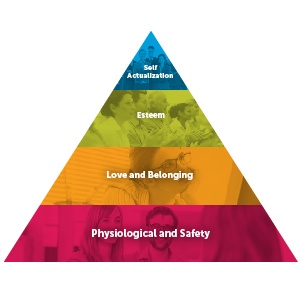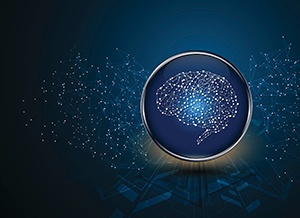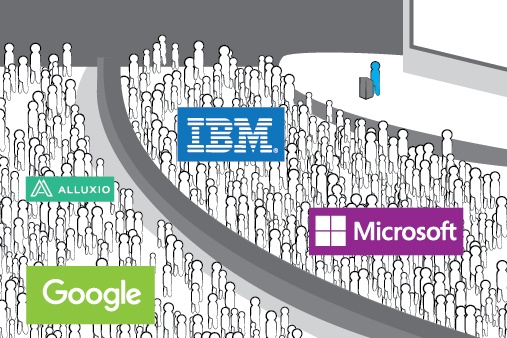In this interview with PYMNTS, Laks Srinivasan discusses the challenges and opportunities the Big Data brings to the world's largest enterprises.
Big Data may be everywhere, but that doesn’t mean that companies are able to actually get the most out of it in an efficient and scalable way.
With the notion that the world’s flow of computable information would eventually become the oil of the twenty-first century, Opera Solutions was launched back in 2004 with the goal of addressing the challenges and opportunities emerging as a result of the influx of data that came from more people having increased access to technology and a greater ability to generate even more data.
Read More
Topics:
Big Data,
Data Science,
Machine Learning
Artificial Intelligence (AI) is helping the enterprise create dynamic new applications and new ways to better serve customers, prevent and cure diseases, detect security threats, and more. We’re seeing how rapid advances in the field as a whole as well as the underlying technology are leading to more real-world opportunities that already are making a big impact. Speaking at a 2017 panel discussion with the The Wall Street Journal, AI luminary Andrew Ng observed, “Things may change in the future, but one rule of thumb today is that almost anything that a typical person can do with less than one second of mental thought we can either now or in the very near future automate with AI.” That’s a startling assessment for what we can expect.
Read More
Topics:
Big Data,
Data Science,
Machine Learning,
Artificial Intelligence

In my role of leading Product Management and Presales at Opera Solutions, I am constantly exposed to direct customer interactions, most often in the early stages of the sales cycle. In these meetings, part of my job is to assess our prospective customer’s pain points and needs as much as they are assessing our products, technology, and capabilities. Thus, given the exposure we get at Opera Solutions, I am in a good position to understand real-world business needs around analytics across industries.
We often talk about corporate cultures, but the experience with hundreds of customers led me to think of corporate psychology, and juxtaposing Maslow’s hierarchy of needs to the current state of data science adoption and readiness in the industry. Companies need to recognize the stage they are in and not be seduced by the hype or promise of the technology. Data science adoption needs not follow a sequential maturity process; dynamic corporations can certainly accelerate things when the need and will exist. So for fun, here’s a take on Maslow’s Hierarchy of Needs adapted to data science.
Read More
Topics:
Big Data,
Data Science
To predict the future, one must look at the past, says the old adage. To determine what to expect in 2017, we thought it was best to draw lessons from 2016 despite our industry’s yearning for dramatic change. Laks Srinivasan, COO at Opera Solutions, shares his insights into the biggest Big Data trends of 2016 and reflects on where the market is going and how companies will react.
Read More
Topics:
Big Data,
Data Science,
Machine Learning,
Artificial Intelligence
Artificial intelligence is no longer just evolving nomenclature in IT. With the technology’s recent progress, organizations of all shapes and sizes are taking interest. With the mainstream press and industry analysts from every corner weighing in, it is worth taking stock of the technology and learning how to differentiate between three arguably over-hyped terms: machine learning, artificial intelligence (AI), and deep learning.
It’s best to consider the concentric model depicted in the figure below. AI is shown as the superset since it was the idea that came first, and it has been evolving and expanding since then. A subset of AI is machine learning, which came out of the quest of AI at an early stage. The innermost subset is deep learning, which is just one class of machine learning algorithms. Deep learning is a hot area right now, and the one most typically associated with the rise in AI today.
Read More
Topics:
Data Science,
Machine Learning,
Artificial Intelligence
A guide from the head of HR at a leading analytics company
Data scientists are in higher demand than ever before. According to the latest CrowdFlower survey, 79% of respondents reported a data scientist shortage in 2015. In 2016, that number grew to 83%. The race is on to find skilled people who can organize, structure, and make business sense out of Big Data sets. People with heavy STEM, analytics, and conceptual skills, and the attendant work-friendly personality traits (insatiable curiosity, ability to prioritize, and a healthy dose of skepticism, to name a few), can virtually write their own tickets.
Read More
Topics:
Big Data,
Data Science,
Analytics
Everywhere you turn, both business and IT talk about data science. But there’s also trepidation about how to get started, especially in the context of attaining an organization’s business goals and objectives beyond the realm of lab or departmental experimentation.
Read More
Topics:
Big Data,
Data Science
Everyone wants to belong. But how can that basic human need coexist with the commercial needs of a business so that both the customer and the business find the relationship beneficial? Big Data analytics makes it possible while also opening new possibilities.
History is replete with examples of human beings finding ways to connect with one another. We form tribes, congregations, clubs, and entire societies. We develop communications channels and pass specialized content through those channels. Even efforts to divide these groups and disrupt these channels simply engender new ones and actually help strengthen our identity as individuals. This pattern has continued to evolve with the advent of the digital age and extends to peoples’ relationships with products and services. Are you loyal to Mac or PC? Do you use Facebook or Instagram? Are you enrolled in Amazon Prime? Are you a Netflix subscriber? This need to identify one’s self with a larger group is a primal human instinct no matter how contemporary the group.
Read More
Topics:
Big Data,
Analytics,
Marketing
“Didn’t you just go to a similar Big Data conference recently?” my wife asked me. “How much could have changed in a few months?” I was hesitating about attending another conference in a short time span. My wife is right about most things, but in this case, I am glad I didn’t listen and went anyway. I learned about many new advances in both commercial and open source tools and across the whole technology stack: new hardware, in-memory databases, and new-and-improved tools.
Read More
Topics:
Big Data,
Data Science,
Signal Hub Technologies,
Machine Learning,
Hadoop,
Spark
Calculating customer lifetime value has been a critical part of the marketing process for years, but new technologies are changing consumer behavior, and marketing professionals need to catch up.
Ever have a weekend where you just can’t stop spending money? Maybe you’re using some free time to stock up, or you’re decorating a room or planning a party. Or maybe you’re not spending more but just consuming more — a good television or movie series or, for example, plowing through a good book on your Kindle. This kind of behavior is called “clumpiness.” And while it’s not necessarily new, new technologies — particularly in the world of digital content — have shed light on this type of behavior for all industries. The problem is that it hasn’t been included in the formula marketers have been using for decades.
Read More
Topics:
Signal Hub Technologies,
Analytics,
Marketing












